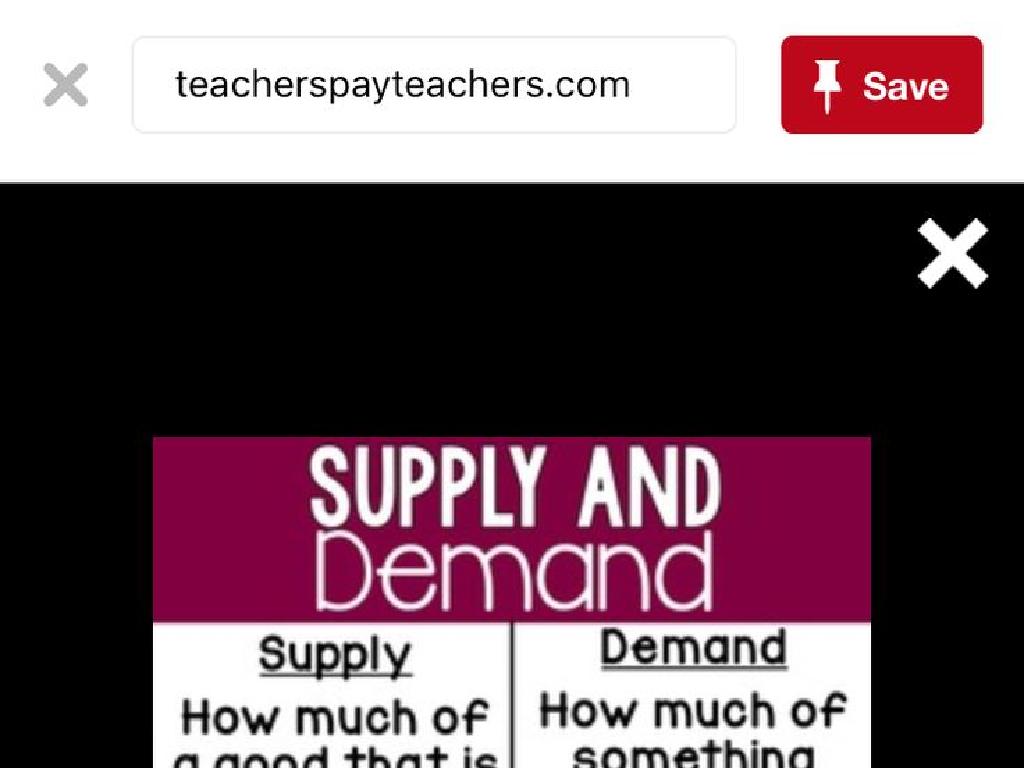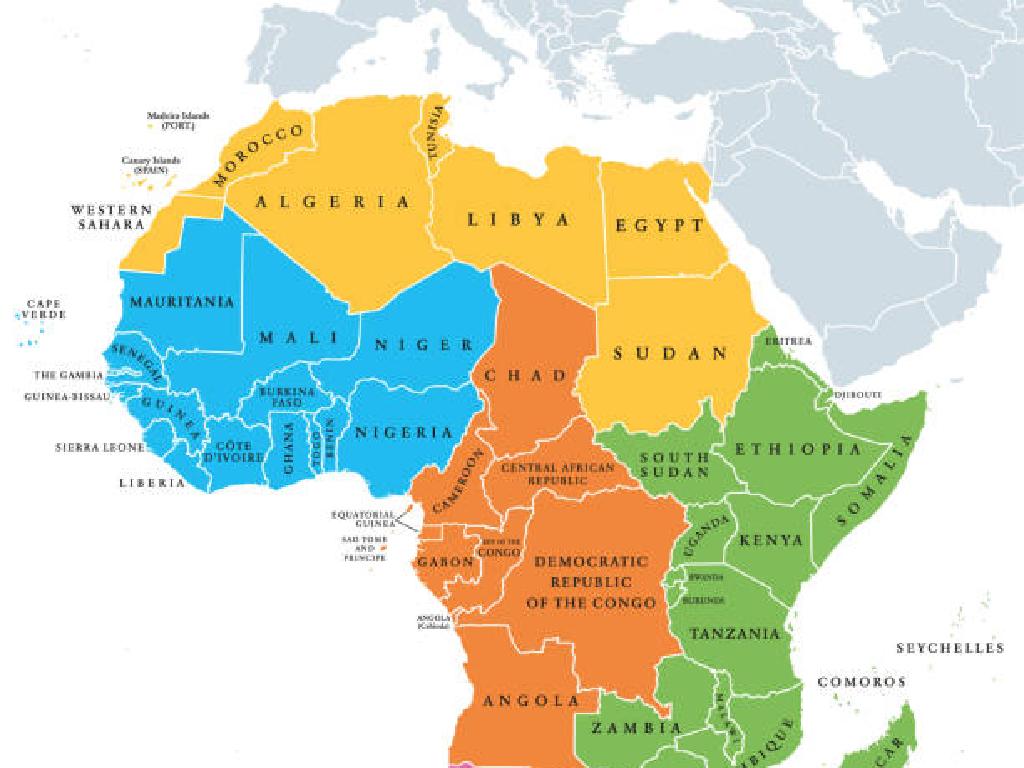Which One Is Not Like The Others?
Subject: Language arts
Grade: Pre-k
Topic: Categories
Please LOG IN to download the presentation. Access is available to registered users only.
View More Content
Welcome to Categories!
– Greet the class: Good morning!
– Today’s topic: Learning about Categories
– Categories help us sort things that are alike
– Similar vs. Different things
– We’ll group items by what makes them the same or not
– Fun with Categories game
– We’ll play a game to spot the odd one out!
|
This slide is designed to introduce Pre-k students to the concept of categories. Start the class with a warm greeting to create an inviting atmosphere. Explain that categories are a way to see how things are alike or different. Use simple, relatable examples like sorting fruits by color or toys by type to illustrate the concept. Engage the students with a game where they identify items that don’t belong in a group, reinforcing their understanding of categories. The activity should be interactive and visual, using real objects or pictures to keep the students interested and involved.
Learning About Categories
– What is a category?
– A set of things with shared characteristics
– Categories group similar items
– Example: Fruit category
– Fruits like apples and bananas grow on plants
– Recognizing differences
– Find items that don’t fit in a category
|
This slide introduces the concept of categories to Pre-k students. Begin by explaining that a category is a way to sort things that are alike in some way. Use tangible examples like fruits, which are all foods that come from plants, to illustrate the idea of a category. Emphasize that categories help us organize our world by grouping similar items together. Encourage students to think of other categories they know, like toys or colors. Conclude by introducing the activity of identifying items that do not belong in a particular category, which will help develop critical thinking and categorization skills.
Similar and Different: Finding the Odd One Out
– Categories group similar things
– Like fruits or shapes in the same group
– Some things don’t fit in a category
– Like a banana in a group of apples
– Spot what is different
– Understanding ‘belonging’
– Learning which items are part of a group
|
This slide introduces the concept of categories to Pre-k students, helping them understand that certain things belong together because they share similarities. It also touches on the idea that sometimes an item might not belong to a specific group, and it’s important to recognize why. Use tangible examples like grouping fruits or shapes and then identifying the one that doesn’t fit. This activity will enhance their observational skills and their ability to classify objects based on attributes. During the presentation, engage the students with questions and encourage them to explain why certain items belong together and why others do not.
Let’s Practice Together: Finding the Odd One Out!
– Observe the pictures closely
– Spot the item that’s different
– Find the fruit among animals
– Is an apple or a dog the odd one out?
– Explain why it’s not the same
– Fruits don’t walk or bark like animals!
|
This slide is for a class activity designed to help Pre-k students understand the concept of categorization by identifying items that do not belong in a particular group. Display pictures with a mix of fruits and animals and ask the students to find the fruit among the animals. This activity will enhance their observational skills and their ability to distinguish between different categories of objects. Encourage the children to explain why the fruit is not like the others, reinforcing the concept of categories. Provide guidance and positive reinforcement as they make their selections.
Finding Differences: Unique Items
– Review examples as a group
– Identify the odd item out
– Which item looks different? Why?
– Discuss why it doesn’t fit
– Is it a different color, shape, or size?
– Practice with fun categories
|
This slide is aimed at helping Pre-k students understand the concept of categorization by identifying items that do not belong in a particular group. Start by reviewing examples together, pointing out the item that is different from the rest in each category. Encourage the children to explain why the item does not fit with the others, discussing attributes such as color, shape, or size. Use simple, relatable categories like fruits, animals, or toys to make the activity engaging. The goal is to develop critical thinking and observation skills in a fun and interactive way. For the activity, prepare a set of images or objects that belong to different categories and have one odd item in each set. Let the children take turns to pick the odd one out and explain their choice.
Your Turn: Spot the Difference!
– Find the unique item in a group
– Circle the different item
– Each group has one that doesn’t belong
– Is it a different color, shape, or size?
– Show us what you’ve found!
– Be ready to explain your choice
|
This slide is an interactive activity for the students to engage with the concept of categorization by identifying items that do not belong in a particular group. Encourage the children to observe the groups of items carefully and find the one that is different based on attributes like color, shape, or size. Once they identify the odd one out, they should circle it. This activity helps develop critical thinking and observation skills. Prepare to assist students who may need help and ensure that each child has a chance to explain their choice, reinforcing their understanding and ability to articulate their thought process.
Class Activity: Category Hunt
– Let’s go on a Category Hunt
– Find matching category objects
– Objects like crayons, blocks, or books
– Spot the odd one out
– Which item doesn’t fit with the others?
– Share your findings with us
|
This activity is designed to help Pre-k students understand the concept of categories by engaging them in a fun and interactive hunt around the classroom. Teachers should guide the students to look for groups of objects that are similar, such as a collection of crayons or a pile of books, and then identify one object that doesn t belong to that category. For example, a pencil among a group of crayons. After the hunt, each student will have the opportunity to explain their findings to the class, which will reinforce their understanding of categories and differences. Possible variations of the activity could include finding colors that don’t match, shapes that are different, or sorting by size. This will help develop critical thinking and observational skills.
Fantastic Categorizers!
– Celebrating our learning
– Categories group similar things
– Like fruits or shapes in a group
– Spot the odd one out
– Which item doesn’t fit with the rest?
– Practice makes perfect
– Keep looking for examples at home!
|
This slide wraps up our lesson on categories, reinforcing the concept that a category is a collection of items that share common characteristics. It’s important to praise the children for their effort and understanding. Remind them that in every group of similar items, there can sometimes be an item that doesn’t belong, and identifying it helps us understand categories better. Encourage the children to continue practicing this skill by finding categories and the odd item out in their everyday environment, like during playtime or while helping with groceries. This will help solidify their understanding and application of the concept of categories.





